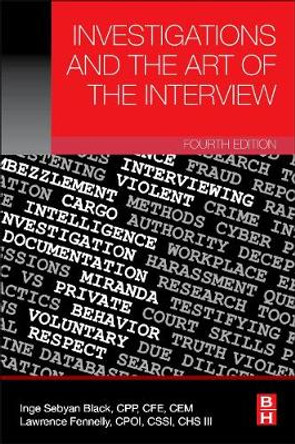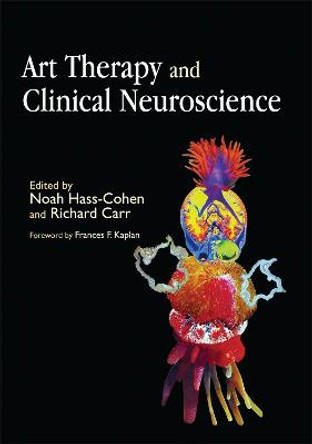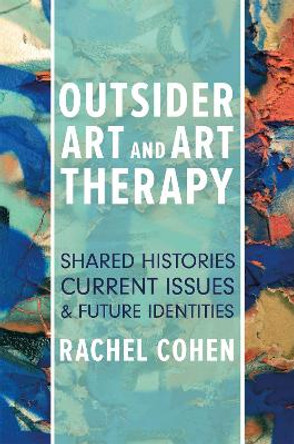Description
Forensic Art Therapy is designed as an educational and informative resource for individuals from a diverse array of disciplines that engage in investigatory undertakings, interview victims and witnesses, and provide evidentiary testimony.
The material presented serves as a primer for professionals that may present in court on behalf of a client. Ethical issues inherent in the forensic arena, as well as the use of novel scientific evidence in the form of drawings, legal proceedings, testimonials, and practical tips and strategies for effective witnessing, are shared. Research regarding a forensic art therapy investigative interview process, the Common Interview Guideline, examines the facilitative factor associated with the effect of drawing. When utilized as a primary resource within investigative interviews, drawing has the potential to offer support, promote empowerment and enhance disclosure. Understanding how drawing functions in investigative interviews and what it offers for the child, the team and the process contributes to on-going research and best practice.
The text serves as a resource and a handbook for students and professionals that investigate, interview, testify and intervene on behalf of child victims and witnesses from the domains of child protection, law enforcement, prosecution, the judiciary, creative arts therapies, social work and allied practitioners in medicine and mental health.
About the Author
Marcia Sue Cohen-Liebman, PhD, ATR-BC, LPC, LPAT, is a forensic art therapist, child interview specialist, educator and child advocate who assists victims and witnesses of interpersonal violence, maltreatment and traumata.
Reviews
"I was first introduced to Dr. Marcia Sue Cohen-Liebman and her work in forensic art therapy 25 years ago when she provided a pre-conference course/workshop on the topic at the national AATA conference. I fortuitously -dare I say, accidentally--found myself in the room, listening to some of Dr. Cohen-Liebman's new [to me] and innovative ideas on how to use drawings in forensic investigations and testimonies. Immediately following, we had a brief discussion on forensic art therapy, its importance in the field and how important it was to differentiate from art therapy in forensic settings. This evolved into numerous conversations, one article, several presentations and a long-lasting mutual respect and friendship.
I have been following Dr. Cohen-Liebman's illustrious career closely with admiration and glee over the years as she has continued to hone and expand her expertise. She continues to serve as a stalwart bellwether in developing resources and training to successfully and ethically provide valid forensic art therapy.
A number of years ago, I found myself in a situation where I was asked to testify on the art completed by a man on trial for murdering one of his children and attempting to kill his other. I knew who I needed to turn to for advice and counsel-- and Dr. Cohen-Liebman was readily and enthusiastically available, providing comprehensive support with patience, diligence and care regarding judicial and testimonial process and procedure. At that time, there were only a few resources available about forensic art therapy, and fewer still that deconstructed carefully and in detail systematic forensic art therapy processes and strategies; the majority of which were provided by Dr. Cohen-Liebman. It is perhaps needless for me to say that I have been waiting patiently for this book for a very long time.
Well, the wait is now over, and Forensic Art Therapy: The Art of Investigating, Interviewing and Testifying fulfills all expectations. This book truly is the culmination of Dr. Cohen-Liebman's life's work, and it is apparent she was not going to release it until she was ready-- not until she carefully dotted each "i" and cautiously crossed each "t" to diligently and clearly communicate these very sensitive procedures and experiences. And we, the readers, are better for this.
Through detail and deconstruction, and her artful examples and vignettes, Dr. Cohen-Liebman simultaneously demystifies the practice of applying an art therapy-based process to investigative procedures while systematically demonstrating the intricate and careful knowledge needed to robustly and ethically investigate, interview and testify. As a result, she has created the ultimate resource to be used by those faced with the daunting task of forensic engagement and throughout Dr. Cohen-Liebman demonstrates why she is the forensic art therapist."
David E. Gussak, PhD, ATR-BC, Florida State University, professor of Art Therapy and Project Coordinator of the FSU/FDC Art Therapy in Prisons Program
"A book on Forensic Art Therapy has been needed for a very long time. This socially and culturally vital domain is one where the specialized understandings of a sophisticated art therapist can make a critical difference in determining the truth. The author's vast experience in the delicate process of forensic investigation with youngsters who have been victims of or witnesses to abuse is unique and therefore extremely valuable. All who are involved in seeking justice for traumatized children will benefit from her thoughtful creation of a protocol that helps little ones tell their stories through art. This book is a wonderful and welcome gift to the professional community."
Judith A. Rubin, PhD, ATR-BC, former president and honorary life member of the American Art Therapy Association, and author of Child Art Therapy, The Art of Art Therapy, Introduction to Art Therapy and Artful Therapy
"The expertise and wisdom shared in this book is welcomed and long overdue for all clinicians who work with traumatized children. Children, equipped with developing cognitive and language skills, often struggle to explain the horrors of abuse through words. These trauma-informed methods to integrate verbal and art interventions are proven effective, promoting novel approaches to investigate and document childhood sexual abuse. The Common Interview Guideline (CIG), explained in great detail, provides clinicians with the structure to gain critical evidence amidst the often-overwhelming context of abuse. Dr. Cohen-Liebman, a well-recognized expert in this field has documented her findings following more than 2 decades of research and clinical work. Developed through practices of great insight and compassion, the CIG is a sensible and well-informed approach. Outlined recommendations are supported by extensive explanations of how trauma impacts the mind and body in childhood. Clinicians of all disciplines can benefit from this book for the courageous treatment of childhood abuse."
Marygrace Berberian, LCAT, ATR-BC, LCSW, clinical assistant professor and director of the NYU Art Therapy in Schools Program, New York University
Book Information
ISBN 9781032125343
Author Marcia Sue Cohen-Liebman
Format Paperback
Page Count 426
Imprint Routledge
Publisher Taylor & Francis Ltd
Weight(grams) 480g







